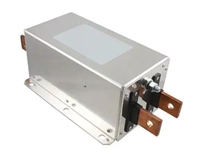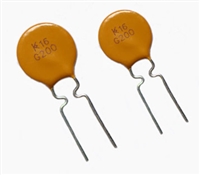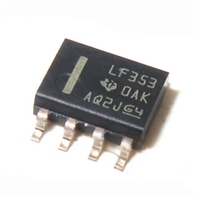AD73322L
APPENDIX C
interrupt service routine the Tx register is loaded with the con-
trol word for Channel 2. In Steps 9–10, Channels 1 and 2 are
loaded with a control word setting for Control Register B
which programs DMCLK = MCLK, the sampling rate to
DMCLK/256, SCLK = DMCLK/2.
Configuring an AD73322L to Operate in Mixed Mode1
This section describes a typical sequence of control words that
would be sent to an AD73322L to configure it for operation in
mixed mode. It is not intended to be a definitive initialization
sequence, but will show users the typical input/output events
that occur in the programming and operation phases2. This
description panel refers to Table XXIII.
Steps 11–17 are similar to Steps 6–12 except that Control Reg-
ister C is programmed to power up all analog sections (ADC,
DAC, Reference = 2.4 V, REFOUT). In Steps 16–17, DAC words
are sent to the device—both DAC words are necessary as each
channel will only update its DAC when the device has counted a
number of SDIFS pulses, accompanied by DAC words (in mixed-
mode, the MSB = 0), that is equal to the device count field of
Control Register A4. As the channels are in mixed mode, the
serial port interrogates the MSB of the 16-bit word sent to
determine whether it contains DAC data or control information.
DAC words should be sent in the sequence Channel 2 followed
by Channel 1.
Steps 1–5 detail the transfer of the control words to Control
Register A, which programs the device for Mixed-Mode opera-
tion. In Step 1, we have the first output sample event following
device reset. The SDOFS signal is simultaneously raised on
both channels, which prepares the DSP Rx register to accept the
ADC word from Channel 2 while SDOFS from Channel 1
becomes an SDIFS to Channel 2. The cascade is configured
as nonFSLB, which means that the DSP has control over what
is transmitted to the cascade3 and in this case we will not trans-
mit to the devices until both output words have been received
from the AD73322L.
Steps 11–17 illustrate the implementation of Control Register
update and DAC update in a single sample period. Note that
this combination is not possible in the FSLB configuration3.
In Step 2, we observe the status of the channels following the
reception of the Channel 2 output word. The DSP has received
the ADC word from Channel 2, while Channel 2 has received
the output word from Channel 1. At this stage, the SDOFS of
Channel 2 is again raised because Channel 2 has received Chan-
nel 1’s output word and, as it is not addressed to Channel 2, it
is passed on to the DSP.
Steps 18–25 illustrate a Control Register readback cycle. In Step
22, both channels have received a Control Word that addresses
Control Register C for readback (Bit 14 of the Control Word =
1). When the channels receive the readback request, the register
contents are loaded to the serial registers as shown in Step 23.
SDOFS is raised in both channels, which causes these readback
words to be shifted out toward the DSP. In Step 24, the DSP
has received the Channel 2 readback word while Channel 2 has
received the Channel 1 readback word (note that the address
field in both words has been decremented to 111b). In Step 25,
the DSP has received the Channel 1 readback word (its address
field has been further decremented to 110b).
In Step 3 the DSP has now received both ADC words. Typi-
cally, an interrupt will be generated following reception of the
two output words by the DSP (this involves programming the
DSP to use autobuffered transfers of two words). The transmit
register of the DSP is loaded with the control word destined for
Channel 2. This generates a transmit frame-sync (TFS) that is
input to the SDIFS input of the AD73322L to indicate the start
of transmission.
Steps 26–30 detail an ADC and DAC update cycle using the
nonFSLB configuration. In this case no Control Register update
is required.
In Step 4, Channel 1 now contains the Control Word destined
for Channel 2. The address field is decremented, SDOFS1 is
raised (internally) and the Control word is passed on to Channel
2. The Tx register of the DSP has now been updated with the
Control Word destined for Channel 1 (this can be done using
autobuffering of transmit or by handling transmit interrupts
following each word sent).
NOTES
1Channel 1 and Channel 2 of the description refer to the two AFE sections of
the AD73322L device.
2This sequence assumes that the DSP SPORT’s Rx and Tx interrupts are enabled.
It is important to ensure there is no latency (separation) between control words in
a cascade configuration. This is especially the case when programming Control
Registers A and B.
3Mixed-mode operation with the FSLB configuration is more restricted in that
the number of words sent to the cascade equals the number of channels in the
cascade, which means that DAC updates may need to be substituted with a
register write or read. Using the FSLB configuration introduces a corruption of
the ADC samples in the sample period following a Control Register write. This
corruption is predictable and can be corrected in the DSP. The ADC word is
treated as a Control Word and the Device Address field is decremented in each
channel that it passes through before being returned to the DSP.
4In mixed mode, DAC update is done using the same SDIFS counting scheme
as in normal data mode with the exception that only DAC words (MSB set to
zero) are recognized as being able to increment the frame sync counters.
In Step 5 each channel has received a control word that addresses
Control Register A and sets the device count field equal to two
channels and programs the channels into Mixed Mode—MM
and PGM/DATA set to one.
Following Step 5, the device has been programmed into mixed
mode although none of the analog sections have been powered
up (controlled by Control Register C). Steps 6–10 detail update
of Control Register B in mixed mode. In Steps 6–8, the ADC
samples, which are invalid as the ADC section is not yet powered
up, are transferred to the DSP’s Rx section. In the subsequent
REV. 0
–37–






 电子元器件中的网络滤波器、EMI滤波器与EMC滤波器:分类关系与功能详解
电子元器件中的网络滤波器、EMI滤波器与EMC滤波器:分类关系与功能详解

 NTC热敏电阻与PTC热敏电阻的应用原理及应用范围
NTC热敏电阻与PTC热敏电阻的应用原理及应用范围

 GTO与普通晶闸管相比为什么可以自关断?为什么普通晶闸管不能呢?从GTO原理、应用范围带你了解原因及推荐型号
GTO与普通晶闸管相比为什么可以自关断?为什么普通晶闸管不能呢?从GTO原理、应用范围带你了解原因及推荐型号

 LF353数据手册解读:特性、应用、封装、引脚说明、电气参数及替换型号推荐
LF353数据手册解读:特性、应用、封装、引脚说明、电气参数及替换型号推荐
